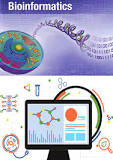Unveiling the Wonders of Bioinformatics: Decoding Life’s Mysteries through Computational Biology

The Fascinating World of Bioinformatics
Bioinformatics is a rapidly evolving field at the intersection of biology, computer science, and information technology. It involves the use of computational tools and techniques to analyse and interpret biological data, such as DNA sequences, protein structures, and gene expression profiles.
One of the key goals of bioinformatics is to uncover meaningful patterns and insights from vast amounts of biological data. This information can be used to understand biological processes, predict disease outcomes, design new drugs, and much more.
Bioinformatics plays a crucial role in modern biological research. It has revolutionised the way scientists study living organisms by enabling them to analyse complex biological systems on a molecular level.
Some common applications of bioinformatics include:
- Genome Sequencing: Bioinformatics tools are used to assemble and analyse DNA sequences to understand genetic variations and their implications.
- Protein Structure Prediction: By simulating protein structures computationally, bioinformaticians can predict their functions and interactions with other molecules.
- Phylogenetic Analysis: Bioinformatics helps in reconstructing evolutionary relationships among species based on genetic data.
- Drug Discovery: Computational methods in bioinformatics are employed to identify potential drug targets and design new therapeutic compounds.
The field of bioinformatics continues to advance rapidly with the development of new algorithms, databases, and software tools. Researchers in this field collaborate across disciplines to address complex biological questions and drive innovation in medicine, agriculture, biotechnology, and environmental science.
In conclusion, bioinformatics offers a powerful set of tools for exploring the vast complexity of life at the molecular level. Its impact on scientific discovery and technological advancements is profound, making it an indispensable field in modern biology.
Understanding Bioinformatics: Examples, Challenges, Career Prospects, and Coding Aspects
- What is bioinformatics with an example?
- Is bioinformatics very difficult?
- Is bioinformatics high paying?
- Is bioinformatics just coding?
What is bioinformatics with an example?
Bioinformatics is a field that combines biology, computer science, and information technology to analyse and interpret biological data. One example of bioinformatics in action is the analysis of DNA sequences to understand genetic variations and their impact on health and disease. By using computational tools and algorithms, bioinformaticians can compare DNA sequences from different individuals or species to identify similarities, differences, and patterns that provide insights into genetic traits, evolutionary relationships, and potential disease risks. This information is crucial for advancing our understanding of genetics, personalised medicine, and biodiversity conservation.
Is bioinformatics very difficult?
In response to the frequently asked question, “Is bioinformatics very difficult?” the answer can vary depending on one’s background and experience. Bioinformatics, like any field, has its complexities and challenges, especially in dealing with large datasets and intricate biological systems. However, with dedication, a strong foundation in biology and computer science, as well as a willingness to learn and adapt to new technologies and methodologies, mastering bioinformatics is achievable. Many resources, courses, and tools are available to support individuals in navigating the field of bioinformatics and developing the necessary skills to analyse biological data effectively. While it may present challenges, the rewards of delving into this interdisciplinary field can be immensely fulfilling and impactful in advancing scientific research and understanding of living organisms.
Is bioinformatics high paying?
The question of whether bioinformatics is a high-paying field is one that often arises among individuals considering a career in this interdisciplinary field. While salaries in bioinformatics can vary depending on factors such as experience, location, and specific job roles, it is worth noting that bioinformatics professionals are generally well-compensated due to the specialized skills and expertise required in this domain. With the increasing demand for bioinformatics specialists in industries such as healthcare, pharmaceuticals, and biotechnology, coupled with the critical role they play in advancing scientific research and innovation, many professionals find rewarding career opportunities with competitive salaries in the field of bioinformatics.
Is bioinformatics just coding?
In the realm of bioinformatics, a common query that arises is whether the discipline solely revolves around coding. While coding is undoubtedly a significant component of bioinformatics, it is not the sole essence of the field. Bioinformatics encompasses a diverse range of activities beyond coding, including data analysis, algorithm development, statistical modelling, and biological interpretation. Coding serves as a fundamental tool in bioinformatics, enabling researchers to manipulate and analyse vast amounts of biological data efficiently. However, bioinformatics also requires expertise in biology, mathematics, and computer science to effectively address complex biological questions and derive meaningful insights from genomic and proteomic data.
